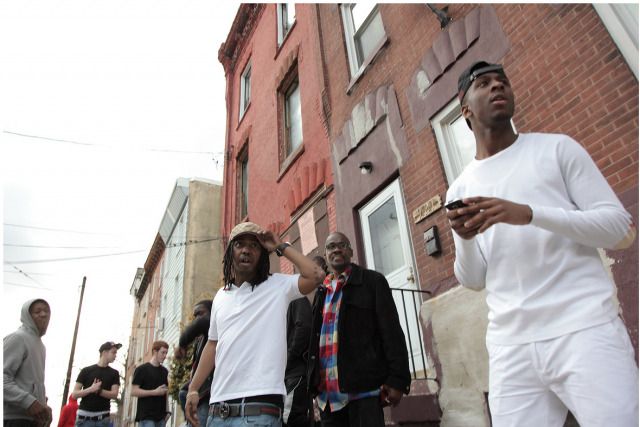From his perspective in Pine Grove, a youth state correctional facility in Western Pennsylvania, Kev Stanard imagined a triumphant homecoming. But his return to North Philadelphia was anything but.
“It wasn’t like that when I came home, man. It was looking all dim out here,” he says. “A lot of things change out here, in three years.”
Stanard, 19, is one of 700,000 people released from U.S. prisons each year. His reality check, and his slow, difficult transition into life at home, is featured in a new documentary, Pull of Gravity, which follows three North Philly men in various stages of reentry into society. Their stories put human faces on the vast problems that both stem from and perpetuate economic and social insecurities in urban neighborhoods.
North Philadelphia is home to seven of the city’s nine lowest-earning zip codes. The film elucidates the economic pressure of men who identify as breadwinners for their families in neighborhoods with few legal jobs and a street culture that glorifies hustling.
Stanard recalled the pressure he felt to provide for his family by any means necessary. “As a little boy you put the whole family on your back and feel like you’re the man of the house,” he says, “so you gotta take control, you gotta get out there and go get it.”
El Sawyer, Pull of Gravity’s co-director who is also a character in the film, said in an interview that he felt “like an island” when he came home a decade ago after serving eight years — and buckling under the pressure of his waiting family.
“Everybody’s expectation of him coming home was, ‘now we’re gonna get paid, we got El back, he’s the piece of the puzzle we’re missing,’” says Sawyer’s brother, Bryan.
The story in Pull of Gravity is about a lack of jobs and opportunity in North Philadelphia, but it’s also about a street culture and gray economy built in the absence of formal possibilities. And when the primary economy is informal drug dealing, trying to get and hold down a job — a challenge given the stigma associated with a criminal record — can be culture shock.
Additionally, on-screen confrontations with police have a distinct racial tension, as white bike cops trade gibes with black men who gather on the sidewalk. Sawyer and co-director Jon Kaufman film these confrontations from both sides, from inside the police car looking out and from the street looking at the cops.
“On the street level, no matter your role you’re a pawn in the system,” Kaufman said in an interview. “Even if the people who are enforcing the laws, patrolling these neighborhoods, might think the laws they are enforcing aren’t just, they don’t have control. There are much bigger unseen forces at play here.” (Full disclosure: Kaufman is a former classmate.)
While Sawyer and Kaufman were quick to emphasize that they portray only a sliver of the story of reentry by focusing on young men of color, their decision isn’t out of line with socioeconomic demographics. Two-thirds of prisoners in Philadelphia are black men, and nearly half are under 30.
Sawyer chose to highlight his own story because, he said, he had no role models for reentry when he left prison. He has found success and support for sharing his story through the film — he received media training while behind bars — but other characters featured in Pull of Gravity haven’t been as lucky. Stanard lost a painting job that had been netting him a paycheck. One 44-year-old man, who struggles with crack addiction and has been in and out of prison for 20 years, lost his job and relapsed. Both are still at home, but Kaufman said that Stanard is “laying low, trying to physically stay off the streets.”
The film is an intimate look at a broad social issue affecting communities far beyond the North Philadelphia. It is now making the rounds and the filmmakers are planning screenings across the U.S.
Correction: An earlier version of this story misspelled Kev Stanard’s name.

Allyn Gaestel is currently a Philadelphia Fellow for Next City. Much of her work centers on human rights, inequality and gender. She has worked in Haiti, India, Nepal, Mali, Senegal, Democratic Republic of Congo and the Bahamas for outlets including the Philadelphia Inquirer, the Los Angeles Times, Reuters, CNN and Al Jazeera. She tweets @allyngaestel.
















